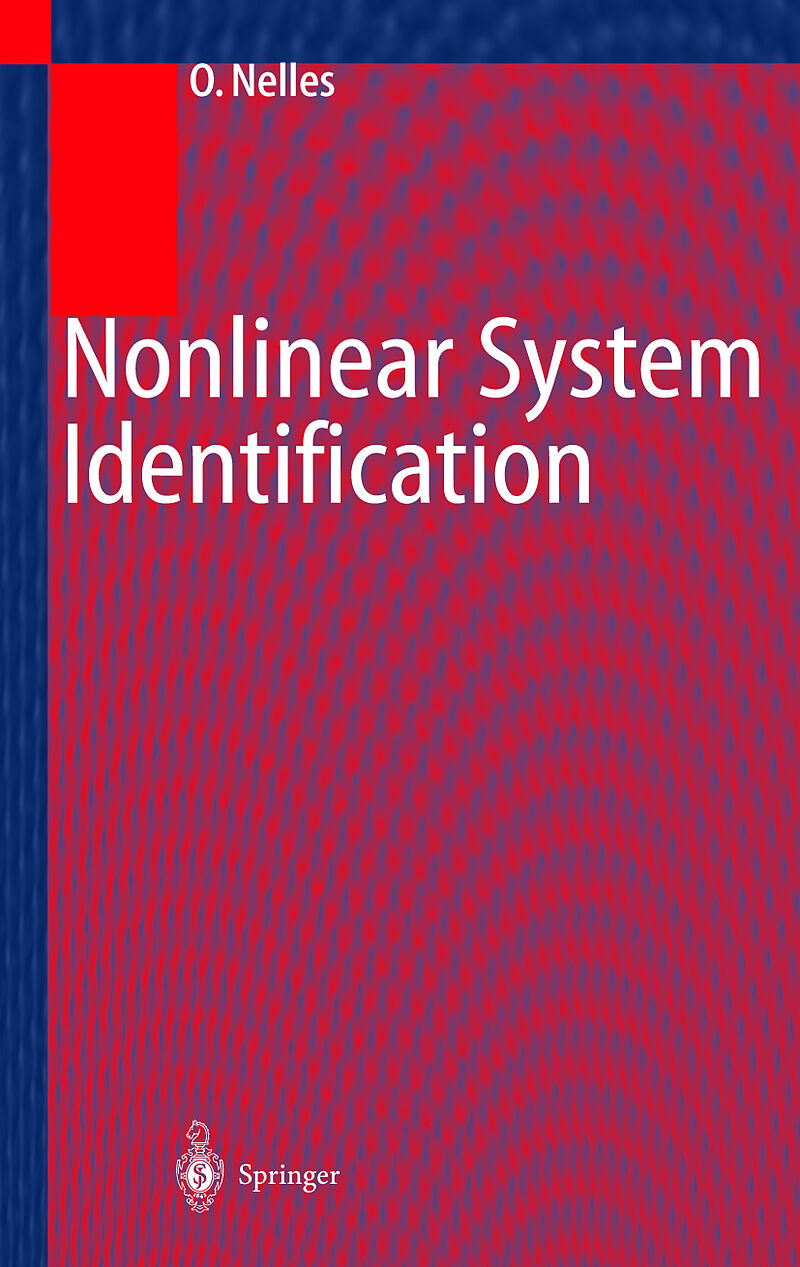Nonlinear System Identification
Einband:
Fester Einband
EAN:
9783540673699
Untertitel:
From Classical Approaches to Neural Networks and Fuzzy Models
Genre:
Mathematik
Autor:
Oliver Nelles
Herausgeber:
Springer Berlin Heidelberg
Auflage:
2001
Anzahl Seiten:
808
Erscheinungsdatum:
06.11.2000
ISBN:
3540673695
The goal of this book is to provide engineers and scientIsts in academia and industry with a thorough understanding of the underlying principles of nonlinear system identification. The reader will be able to apply the discussed models and methods to real problems with the necessary confidence and the awareness of potential difficulties that may arise in practice. This book is self-contained in the sense that it requires merely basic knowledge of matrix algebra, signals and systems, and statistics. Therefore, it also serves as an introduction to linear system identification and gives a practical overview on the major optimization methods used in engineering. The emphasis of this book is on an intuitive understanding of the subject and the practical application of the discussed techniques. It is not written in a theorem/proof style; rather the mathematics is kept to a minimum and the pursued ideas are illustrated by numerous figures, examples, and real-world applications. Fifteen years ago, nonlinear system identification was a field of several ad-hoc approaches, each applicable only to a very restricted class of systems. With the advent of neural networks, fuzzy models, and modern structure opti mization techniques a much wider class of systems can be handled. Although one major characteristic of nonlinear systems is that almost every nonlinear system is unique, tools have been developed that allow the use of the same ap proach for a broad variety of systems.
Easy and intuitive understanding Explanations and terminology from an engineering point-of-view Only basic mathematics required Self-contained, no other literature needed Includes supplementary material: sn.pub/extras
Inhalt
1. Introduction.- I. Optimization Techniques.- 2. Introduction to Optimization.- 3. Linear Optimization.- 4. Nonlinear Local Optimization.- 5. Nonlinear Global Optimization.- 6. Unsupervised Learning Techniques.- 7. Model Complexity Optimization.- II. Static Models.- 9. Introduction to Static Models.- 10. Linear, Polynomial, and Look-Up Table Models.- 11. Neural Networks.- 12. Fuzzy and Neuro-Fuzzy Models.- 13. Local Linear Neuro-Fuzzy Models: Fundamentals.- 14. Local Linear Neuro-Fuzzy Models: Advanced Aspects.- III. Dynamic Models.- 16. Linear Dynamic System Identification.- 17. Nonlinear Dynamic System Identification.- 18. Classical Polynomial Approaches.- 19. Dynamic Neural and Fuzzy Models.- 20. Dynamic Local Linear Neuro-Fuzzy Models.- 21. Neural Networks with Internal Dynamics.- IV. Applications.- 22. Applications of Static Models.- 23. Applications of Dynamic Models.- 24. Applications of Advanced Methods.- A. Vectors and Matrices.- A.1 Vector and Matrix Derivatives.- A.2 Gradient, Hessian, and Jacobian.- B. Statistics.- B.1 Deterministic and Random Variables.- B.2 Probability Density Function (pdf).- B.3 Stochastic Processes and Ergodicity.- B.4 Expectation.- B.5 Variance.- B.6 Correlation and Covariance.- B.7 Properties of Estimators.- References.

Leider konnten wir für diesen Artikel keine Preise ermitteln ...
billigbuch.ch sucht jetzt für Sie die besten Angebote ...
Die aktuellen Verkaufspreise von 6 Onlineshops werden in Realtime abgefragt.
Sie können das gewünschte Produkt anschliessend direkt beim Anbieter Ihrer Wahl bestellen.
Loading...
Die aktuellen Verkaufspreise von 6 Onlineshops werden in Realtime abgefragt.
Sie können das gewünschte Produkt anschliessend direkt beim Anbieter Ihrer Wahl bestellen.
| # | Onlineshop | Preis CHF | Versand CHF | Total CHF | ||
|---|---|---|---|---|---|---|
| 1 | Seller | 0.00 | 0.00 | 0.00 |
